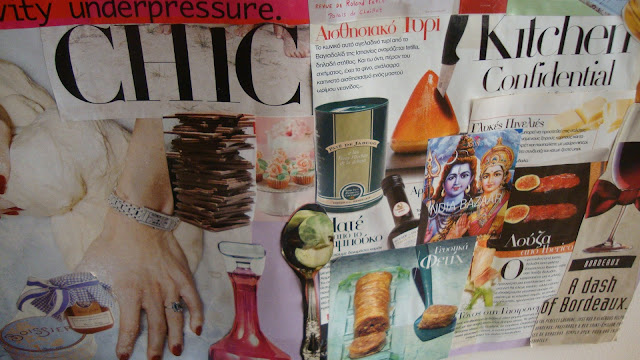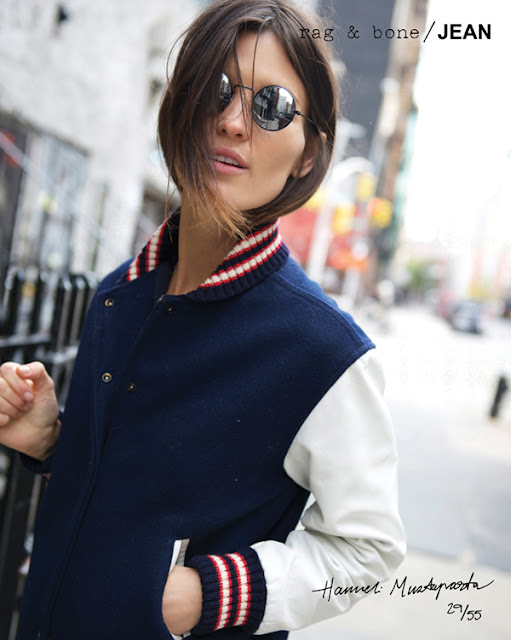sweets in Milan
The Moschino House in Milan
In the Italian label's enchanted world, dresses are fashioned into
headboards, bedside tables and chairs, light fixtures are made of cake
and the pillows, cupcakes. This modern day five star fairy tale is a
must-visit, with its scrumptious Clandestino Milano restaurant.La Maison Moschino, Viale Monte Grappa 12, 20124 Milan.
www.maisonmoschino.com
Art of Perfection | Azzedine Alaïa
In the hands of Azzedine Alaïa, a dress is so much more than stitched fabric. It’s an exaltation of the female form. A technical masterpiece. A unique vision. Over lunch in Paris, fashion’s ultimate independent finally comes to terms with his singular legacy.
You never know who you might run into at Azzedine Alaïa’s headquarters in the Marais section of Paris. On a Friday in December, there’s the fashion photographer Jean-Baptiste Mondino, shopping for a navy A-line minidress as a gift for his wife. Azzedine “has a real sense of the woman’s body,” Mondino says. “And women know that.”
Alaïa walks into the ground-floor shop, as he often does, pleased to see his old friend. “Stay for lunch,” he insists.
Mondino demurs, “I have to work.”
Carla Sozzani, the founder of the 10 Corso Como gallery, boutique and hotel in Milan and Alaïa’s longtime friend and style consultant since 2000, is there too. So is the French photographer Sarah Moon, who recounts how she originally went to see Alaïa in 1977 at his first studio, on the rue de Bellechasse, because she’d heard he made Marlene Dietrich’s suits. “No, my dear, it was Garbo,” he corrects her. “I dressed Garbo.”
After much chatter and joke telling, everyone but Mondino moves into Alaïa’s large open kitchen for lunch. In fact, there are 22 around the immense old glass-topped garden table, including the painter Christophe von Weyhe, Alaïa’s retail manager and life partner of more than 30 years; several company assistants; and some friends of friends. “It’s always like this, lunch and dinner,” Alaïa says, as plates of roast chicken, puréed carrots and mashed potatoes are served.
Alaïa is fashion’s enigma. The Tunisian-born designer has officially been in business for nearly 35 years, and he’s been privately making clothes to order for chic women since the 1960s, yet he still has what would qualify as a cult following. His company remains small — about $63 million a year in an industry where many brands earn hundreds of millions in sales annually. Unlike most designers today, who carry the title of creative director and serve more as managers than couturiers, Alaïa cuts his own clothing patterns and sews the samples himself, each stitch exactly where and how it should be. Most important, through the wizardry of perfectly placed seams and stretch knits, Alaïa’s clothes nip, tuck and hoist to maximum effect. The top model Naomi Campbell, who has known Alaïa since she was 16 and calls him “papa,” describes his designs as “almost magical. No other dress can make a woman look and feel as good as an Alaïa dress because it cinches a woman’s body perfectly.”
Alaïa has always made the clothes he wants to make, at his rhythm, showing them when it pleases him, selling only to stores he likes and delivering them when he wants. Years ago, when he decided he’d had enough of the Paris show schedule, he simply opted to present his collection months after everyone else, and then soon after, stopped showing altogether. Alaïa simply plays by rules of his own making, rather than ones created by the fashion industry. And yet retailers can’t help but love him. His clothes appeal to a broad range of women, from “true collectors” to young customers “investing in pieces that will stay in their wardrobe forever but somehow always seems modern,” says Daniella Vitale, C.O.O. and executive vice president of Barneys New York, which has carried Alaïa since the early 1980s. Alaïa “has an uncanny ability to bridge all of it seamlessly. Very few designers have that capability.” His collection, she adds, “is one of the most successful brands we have in the store.”
Katie Grand, the influential stylist and editor in chief of Love magazine, had Alaïa make her wedding dress, a brown snakeskin number with a fitted bodice and short flared skirt, in 2009. “He tortured me for a few months,” she recalls with a laugh. “The first question he asked was, ‘What size are you going to be at your wedding?’ ” When she told him, he explained that the dress wasn’t the sort that could be altered at the last minute. “He said, ‘I want you to lose weight by the end of next week. Don’t eat anything, and stay on a running machine.’ I said O.K. The dress fit on the wedding day, and I was happy in it.”
Alaïa’s fierce independence was instilled by his grandmother, who, he remembers, “always said, ‘Children until 7 should remain free. No need to clutter their heads with religion and other things. They need to live freely as children.’ ” He’s carried on this philosophy throughout his life. “I am still free,” he insists.
Much of that may soon change. After a brief and relatively hands-off foray with the Prada Group in the early 2000s, during which he expanded into accessories, Alaïa sold his company to Richemont, the Swiss-based group that owns Cartier, Montblanc and Chloé, in 2007. With big money behind him, growth plans are afoot: Sozzani is in Paris in part to help oversee the construction of a new four-story Alaïa outpost on rue Marignan, due to open this year. A perfume — one of luxury fashion’s favorite cash cows — is in the works, as is global retail expansion.
With all of this, Alaïa remains his usual unassuming self: small (just over five foot two), soft-spoken and feisty, dressed in his habitual black Mandarin jacket and trousers, with three dogs — Anouar, a Maltese given to him by Campbell; another Maltese named Waka Waka, from the singer Shakira; and Didine, a St. Bernard — never far from his feet. At roughly 72 years old — he has never admitted his age — he is fine with what appears to be Richemont’s positioning of the brand for a long-term life after he is gone. “All can continue without me,” he says. “It must continue. One day, you say, ‘That’s it’ for yourself. But not for the house. You simply have to find the right replacement.”
Come September, the Paris fashion museum Musée Galliera is mounting an Alaïa retrospective for its reopening after a four-year renovation. Among the gems that will be on display: the immense French Tricolor gown that the designer made for the opera soprano Jessye Norman to wear as she sang at the French bicentennial concert in 1989 and the iconic spiral zipper dress that was inspired by a jacket Arletty wore in the French classic “Hôtel du Nord.” There is also an Alaïa Foundation in the works: a place where his personal design archives, as well as pieces from other designers he admires and collects, like Madame Grès, Madeleine Vionnet and Jacques Fath, will be on display. And in May, the Los Angeles Philharmonic will perform a new version of “The Marriage of Figaro,” the Mozart classic, at the Walt Disney Concert Hall with Alaïa-designed costumes and a Jean Nouvel set. Though busy, Alaïa remains tireless. Of his 75 employees , many under 30, he announces proudly, “But they are older than I am!” One, who is passing through the kitchen at that moment, laughs in agreement. “I am very curious,” Alaïa says. “Every day, I say: What am I going to learn today and whom am I going to meet?” No doubt some of them will be at lunch.
CREDITS AND PHOTOS FROM NEW YORK TIMES
Εγγραφή σε:
Σχόλια (Atom)
Must read
Aς μιλήσουμε για πραγματικό στυλ
Πρόσφατα παρακολούθησα ένα Instagram reel, με πρωταγωνιστές δύο πολύ αγαπημένες μου προσωπικότητες, τον Θέμη Τaτάρη και την Ριάνα Κούνου . ...

Explore my world
♛Popular
♥Tags
★Archive
Δημοφιλείς αναρτήσεις
-
5 questions to Elina Afentaki, fine jewelry designer. A beautiful soul inside out, with sustainable mindset and unique designs. At the ID t...
-
✨ “I love mixing styles, and I definitely consider myself a maximalist. Minimalism is not for me!” — @elietopofficial We had the plea...
-
Introducing Silk Talismans. A creative collaboration with @neso.studio and @ypnosilk.studio . Fine Jewelry pieces in gold and silver dres...
-
Meet the designer: 5 questions to the Lebanese fine jewelry designer Ralph Masri! His precious designs are personal favs for Celine Dion, T...
-
Imagine you are back in 70s and you are spending your summer at Capri. Browse and shop my list at https://shopmy.us/collections/1923290 In ...
-
Create your very own 'Le pliage personalized'' Discover the new personalized bag collection by maison Longchamp ...
-
Πρόσφατα παρακολούθησα ένα Instagram reel, με πρωταγωνιστές δύο πολύ αγαπημένες μου προσωπικότητες, τον Θέμη Τaτάρη και την Ριάνα Κούνου . ...
-
WE CAN SET THIS SKIRT WITH A SIMPLE BLOUSE LIKE THIS PULLOVER IN SAND COLOUR WITH A CHIC COAT/BLACK LEATHER JACKET
Αρχειοθήκη ιστολογίου
-
►
2022
(16)
- ► Δεκεμβρίου (2)
- ► Φεβρουαρίου (1)
- ► Ιανουαρίου (1)
-
►
2021
(15)
- ► Δεκεμβρίου (2)
- ► Σεπτεμβρίου (1)
- ► Ιανουαρίου (10)
-
►
2019
(71)
- ► Δεκεμβρίου (4)
- ► Σεπτεμβρίου (5)
- ► Φεβρουαρίου (8)
- ► Ιανουαρίου (6)
-
►
2018
(79)
- ► Δεκεμβρίου (4)
- ► Σεπτεμβρίου (10)
- ► Φεβρουαρίου (7)
- ► Ιανουαρίου (7)
-
►
2017
(117)
- ► Δεκεμβρίου (10)
- ► Σεπτεμβρίου (9)
- ► Φεβρουαρίου (12)
- ► Ιανουαρίου (11)
-
►
2016
(198)
- ► Δεκεμβρίου (16)
- ► Σεπτεμβρίου (12)
- ► Φεβρουαρίου (20)
- ► Ιανουαρίου (22)
-
►
2015
(306)
- ► Δεκεμβρίου (23)
- ► Σεπτεμβρίου (26)
- ► Φεβρουαρίου (30)
- ► Ιανουαρίου (40)
-
►
2014
(278)
- ► Δεκεμβρίου (62)
- ► Σεπτεμβρίου (10)
- ► Φεβρουαρίου (13)
- ► Ιανουαρίου (22)
-
►
2013
(285)
- ► Δεκεμβρίου (26)
- ► Σεπτεμβρίου (37)
- ► Φεβρουαρίου (9)
- ► Ιανουαρίου (28)
-
►
2012
(245)
- ► Δεκεμβρίου (21)
- ► Σεπτεμβρίου (17)
- ► Φεβρουαρίου (19)
- ► Ιανουαρίου (17)
-
►
2011
(374)
- ► Δεκεμβρίου (34)
- ► Σεπτεμβρίου (38)
- ► Φεβρουαρίου (30)
- ► Ιανουαρίου (40)
-
►
2010
(367)
- ► Δεκεμβρίου (15)
- ► Σεπτεμβρίου (52)
- ► Φεβρουαρίου (19)
- ► Ιανουαρίου (6)




































































